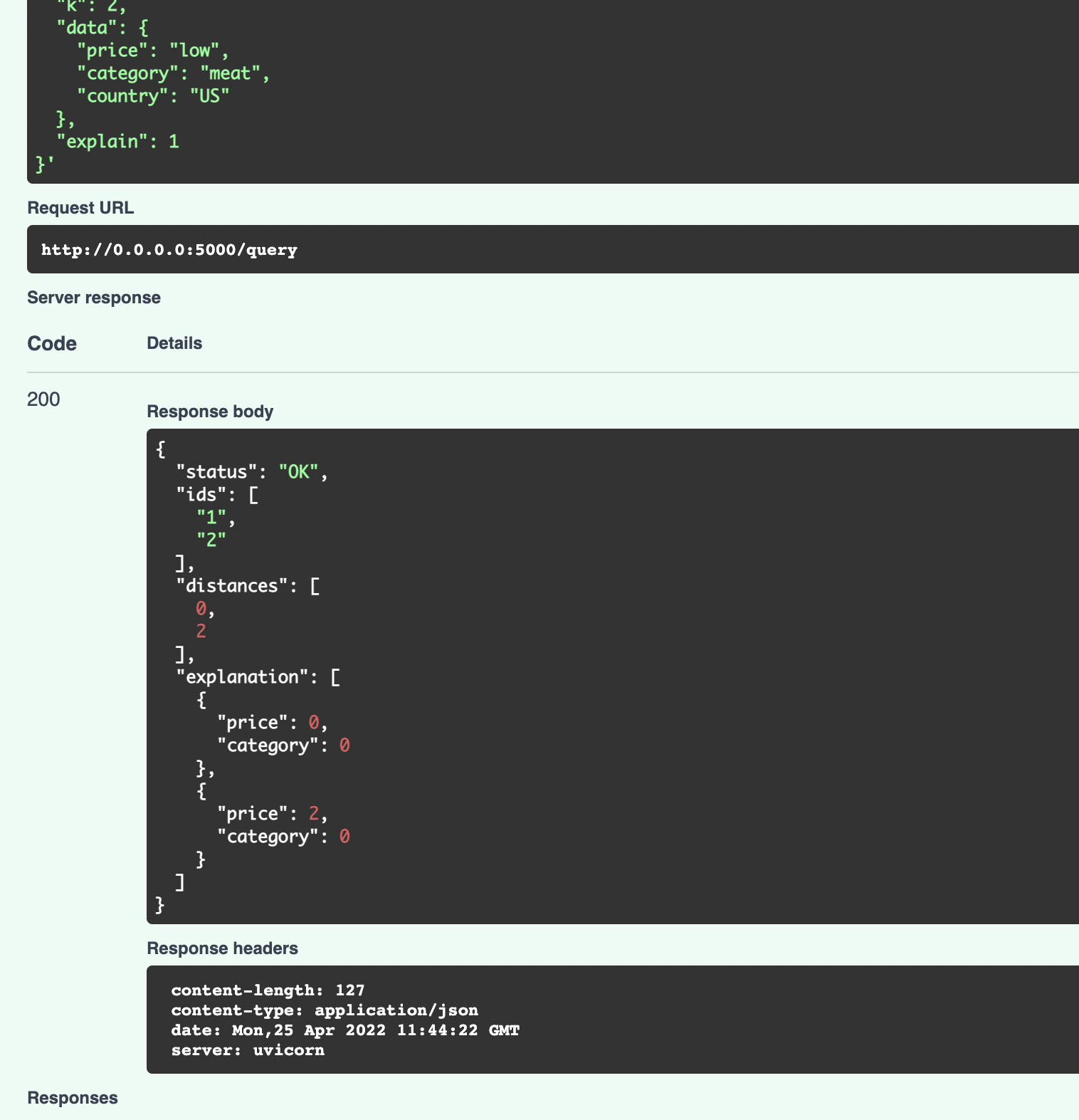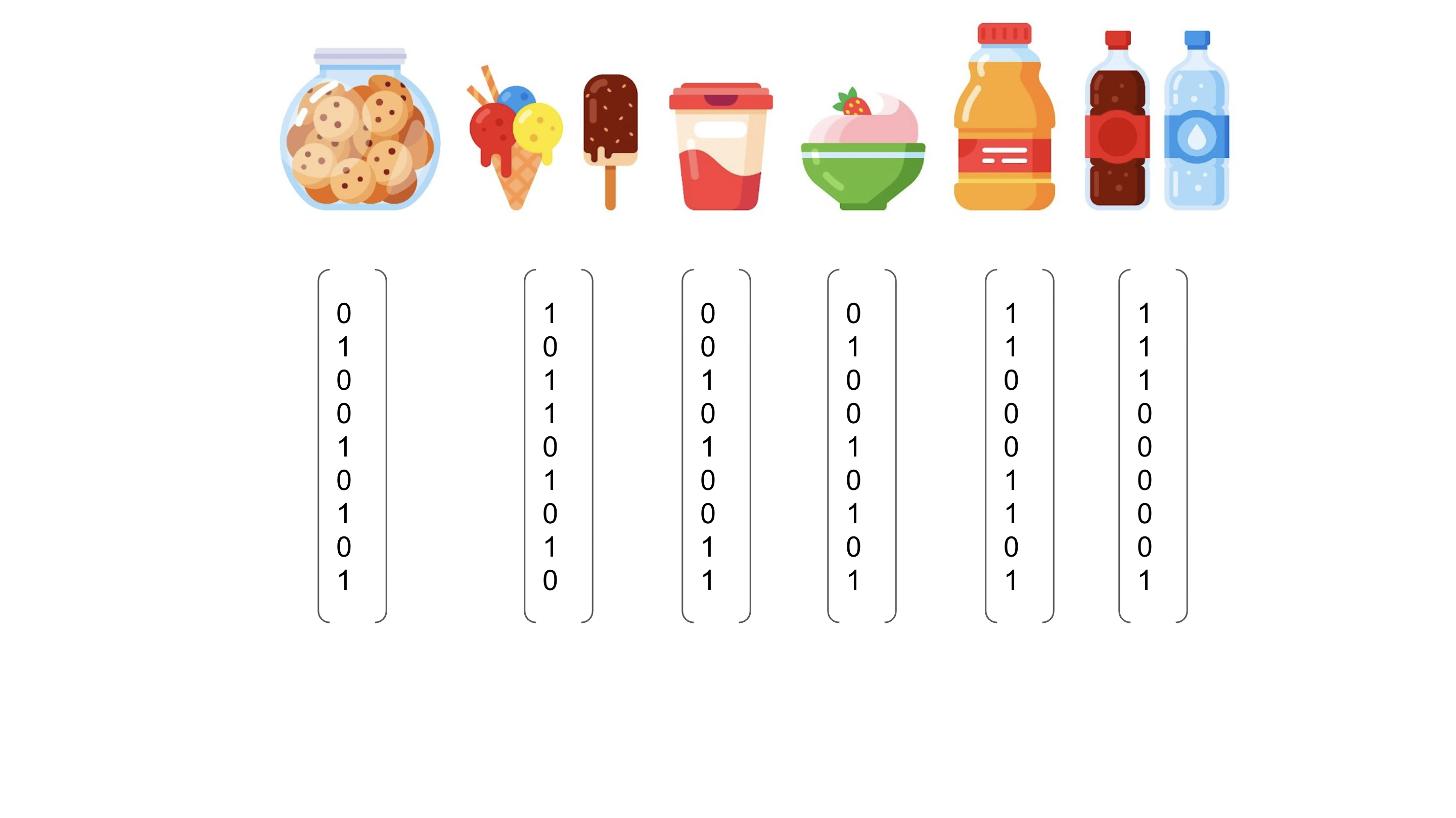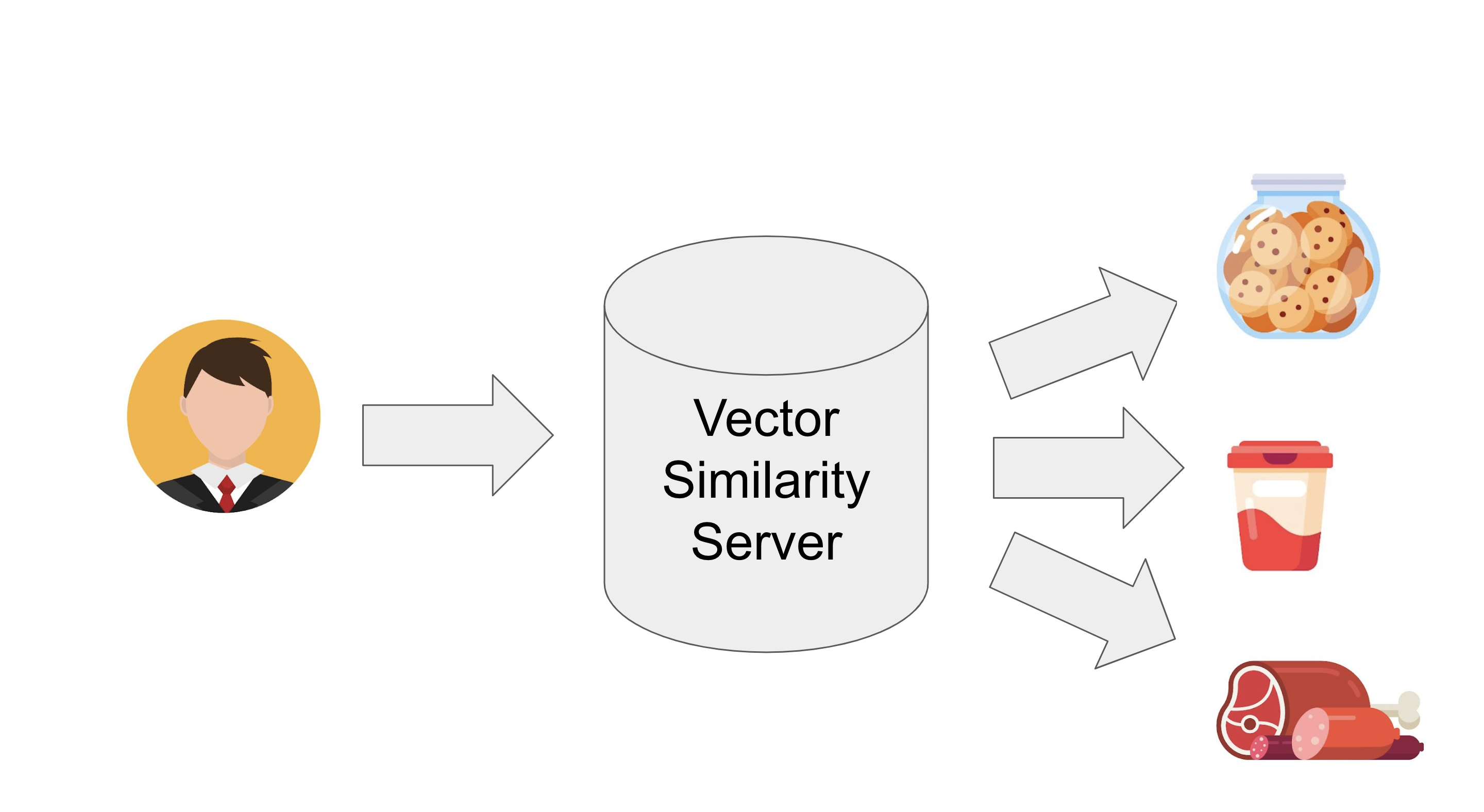Recsplain System 🦖
The Recsplain System makes recommendations and explains them.
It recommends items based on item similarity or user preferences. It explains the recommendations in terms of overall similarity and feature-to-feature similarity.
Install it in your app, use it with your data, and customize it how you want.
Explainable Recommendations
Here is an example item similarity search. You can see the request and response in the image below.

The request is based on a search item that has three features. It is a US-based product in the meat category and low in price.
import recsplain as rx
item_query_data = {
"k": 2,
"data": {
"price": "low",
"category": "meat",
"country": "US"
},
"explain": 1
}
rec_strategy.query(**item_query_data)
The response body in the image above contains the recommendations and explanations.
The ids are ordered by index position from most to least recommended. The lowest index position is the most recommended.
{
"status": "OK",
"ids": ["1", "2"],
"distances": [0, 2],
"explanation": [
{
"price": 0,
"category": 0
},
{
"price": 2,
"category": 0
}
]
}
Distances explain item similarity based on all features and weights. Explanations provide distances for each feature. The distances and explanations correspond to the ids by index position.
Lower values correspond to greater similarity.
In the example, the system recommends item 1 more than item 2 because item 1 has a lower distance.
Item 1 has a lower distance because it has a lower distance for price than B and they are equal distance in category.
How It Works
For item similarity, Recsplain turns items into weighted feature vectors.

The system compares item feature vectors to one another to calculate how similar they are.

For user preferences, Recsplain turns a user into an item feature vector based on the user’s previous history with the items.

Note
For example, a customer of an online store who bought two cookies and a glass of milk has an item feature vector that is a blend of the item vectors for two cookies and milk.
The system compares the user’s item feature vector to the indexed item feature vectors to calculate how similar the items are those the items in the user’s history. The more similar, the higher the recommendation.

Note
To a customer who previously bought two cookies and a glass of milk, the system recommends other items that have similar features to those purchases.
Field Types & Schema
Use the field types and schema to configure the Recsplain filters and encoders.
Filters determine which items are compared to one another. Encoders determine how they are compared.
Here is an example configuration.
import recsplain as rx
config_data = {
"filters": [{ "field": "country", "values": ["US", "EU"] }],
"encoders": [
{
"field": "price",
"values": ["low", "mid", "high"],
"type": "onehot",
"weight": 1
},
{
"field": "category",
"values": ["dairy", "meat"],
"type": "onehot",
"weight": 2
}
],
"metric": "l2"
}
rec_strategy = rx.AvgUserStrategy()
rec_strategy.init_schema(**config_data)
Filter Fields
The filter fields are hard filters. They separate items into different partitions. Only items within the same partition are compared to one another.
The example above creates two partitions. One for US items and another for EU.
Encoder Fields
The encoder fields are soft filters for fuzzy matching. They determine how item features are compared within a partition.
The example above selects the one-hot encoder for each of the item features.
Note
Learn more about the one-hot and other available Encoders.
User Encoders
When recommending items for a user, Recsplain has special encoders you should use. Currently, user encoders encode the user’s history into a feature vector.
Note
ArgMaxML created Recsplain. We are focused on creating software the enables you to integrate recommendation engines into your product to increase customer engagement.